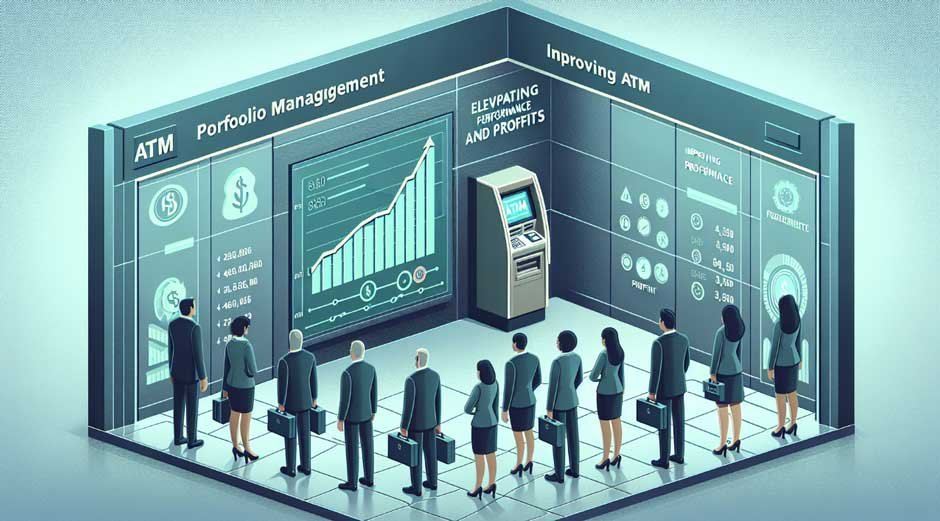Discovering a charge labeled “PAI ISO” on your account can prompt immediate questions about its origins and implications. Payment Alliance International (PAI) stands for a leading entity in the world of ATM services, closely working with financial institutions and retailers to furnish ATM processing, maintenance, and equipment. This explanation clarifies the primary query of what PAI ISO is, setting a clear foundation for understanding its role in financial transactions.
The term ISO, standing for Independent Sales Organization, brings to light companies authorized by banks to vend services such as credit card processing to merchants. The exploration of PAI ISO charges and their impact on account statements forms the crux of this article, providing essential insights for effectively monitoring and managing these fees.
Understanding PAI ISO
Key Services and Charges by PAI
Services Offered by PAI
PAI (Payment Alliance International) is a prominent player in the ATM market, providing comprehensive services aimed at enhancing the efficiency and effectiveness of ATM management. These services include:
- ATM Portfolio Management: Simplifies the management of ATM operations.
- Surcharge Control: Allows dynamic pricing for ATM use during special events or promotions.
- ATM Management Services: Facilitates global access to ATM fleets, enabling functions like software updates and product additions remotely.
- Cash Forecasting and Comprehensive Reporting: Tools to optimize cash flow and monitor the health of ATM portfolios.
- Vantage Services: A specialized division offering cost-effective armored carrier and maintenance services to reduce operational costs and downtime.
Understanding PAI ISO Charges
PAI ISO charges are transaction fees imposed when using ATM or debit card services processed by Payment Alliance International through an Independent Sales Organization. These charges are typically a small percentage of the transaction value. Recognizing these charges on your bank statements is crucial for managing finances effectively. Here’s how PAI ISO charges impact users:
- Transaction Cost Structure: Charges are based on the number of transactions, with a tiered pricing model:
- 0-100,000 transactions: $0.10 each
- 100,001-500,000 transactions: $0.08 each
- 500,001-1,000,000 transactions: $0.06 each
- Over 1,000,000 transactions: $0.04 each
- Monthly and Implementation Fees: A minimum monthly charge of $50 is applicable for PAI message processing, with a one-time implementation fee of $2,000 for setting up PAI ISO 20022 message formatting.
Monitoring and Avoiding Unnecessary Fees
Understanding these charges can help in several ways:
- Avoiding Unnecessary Fees: By using in-network ATMs and being aware of your bank’s policies, you can avoid additional fees.
- Identifying Unauthorized Transactions: An unrecognized PAI ISO charge can be an indicator of fraudulent activity, prompting immediate action to secure your account.
By staying informed about PAI ISO services and charges, users can not only optimize their ATM usage but also enhance their financial security.
How PAI ISO Charges Appear on Statements
PAI ISO charges, associated with ATM withdrawals or debit card purchases, may appear on both bank and credit card statements. These charges are typically detailed as follows:
Identification on Statements
- Line Item Description: Charges are listed as a separate line item, often labeled with descriptions such as “PAI ISO” or “Payment Alliance International.”
- Transaction Details: Each entry includes specific transaction details next to the PAI ISO charge, making it easier to identify the nature of the fee.
Types of Charges Included
- Payment Processing Fees: Costs incurred for processing the transaction through PAI systems.
- Equipment Leasing: Fees related to the leasing of necessary payment equipment.
- Out-of-Network ATM Usage: Additional charges for using ATMs that do not belong to the user’s bank network.
Factors Influencing Charge Amounts
- Bank Policies: Different banks may have varying charges based on their internal policies.
- Transaction Nature and Merchant Policies: The type of transaction and the policies of the merchant accepting the payment can affect the fee amount.
- Location-Based Factors: Charges can vary depending on the location of the ATM or the transaction.
Role of PAI
PAI serves as an intermediary in these transactions, linking ATM networks, card networks, and issuing banks. It is crucial to note that while PAI processes the transactions, the charges themselves are imposed by the ATM owner or operator, not PAI directly. This distinction is important for understanding who sets the fees and how they might be contested or managed.
The Importance of Monitoring PAI ISO Charges
Importance of Regular Monitoring
- Financial Oversight: Regularly checking PAI ISO charges helps businesses manage their payment processing expenses efficiently. This vigilance prevents unnecessary costs that can accumulate unnoticed.
- Fraud Detection: Monitoring these charges is crucial for detecting discrepancies or fraudulent activities. Early detection through consistent review of account statements can prevent significant financial losses.
- Regulatory Compliance: Keeping track of PAI ISO charges ensures adherence to relevant financial regulations and industry standards, thereby avoiding potential fines and reputational damage.
Recognizing and Addressing Fraudulent Transactions
- Signs of Fraud: It’s essential for businesses and individuals to familiarize themselves with the indicators of fraudulent transactions. Unrecognized withdrawals or charges should immediately raise red flags.
- Immediate Action: If a PAI ISO charge appears unauthorized, the account holder must contact their financial institution without delay to report the potential fraud. This prompt action is crucial in preventing further unauthorized transactions.
Best Practices for Managing Bank Statements
- Regular Reviews: Ensure that bank statements are reviewed regularly to identify any unauthorized PAI ISO charges.
- Use of Technology: Employ financial management apps or software to keep track of expenses and set up transaction alerts.
- Secure Storage: Protect personal information and archive old statements securely, either digitally or on paper, to prevent unauthorized access.
Proactive Measures
- Setting Alerts: Configure alerts for all transactions, which can provide immediate notifications of any unauthorized PAI ISO charges.
- Reconciliation Practices: Regularly match receipts with bank statements to ensure all transactions are accounted for and authorized.
By implementing these practices, businesses and individuals can safeguard against unexpected charges and enhance their financial security. Monitoring PAI ISO charges not only helps in managing finances more effectively but also plays a critical role in maintaining the integrity of financial transactions.
Avoiding Unwanted PAI ISO Charges
Strategies to Minimize PAI ISO Charges
Utilize In-Network ATMs
- Bank-Affiliated ATM Usage: Opt for ATMs that are affiliated with your bank. This reduces or eliminates PAI ISO charges by avoiding out-of-network fees.
- Withdraw Larger Amounts Less Frequently: Minimize the number of transactions by withdrawing larger sums of money, which can reduce the frequency of charges.
Credit Over Debit
- Prefer Credit Cards for Purchases: Use credit cards instead of debit cards for transactions to avoid fees associated with out-of-network debit use.
Alternative Payment Methods
- Embrace Cashless Options: Utilize mobile wallets and other digital payment methods to circumvent the need for cash withdrawals that might incur PAI ISO charges.
Awareness and Proactivity
- Informed ATM Use: Always check for displayed fees before using an ATM. This can prevent unexpected charges.
- Monitor Account Activity: Keep a close eye on your account statements to spot any unusual or unauthorized PAI ISO charges promptly.
Negotiate with Financial Institutions
- Discuss Fee Structures: Engage with your bank to understand their fee policies and negotiate better terms if possible.
By implementing these strategies, users can effectively reduce or avoid unnecessary PAI ISO charges, leading to substantial savings and enhanced control over their financial transactions.
Conclusion
Throughout this exploration, we’ve uncovered the significance of PAI ISO charges and their potential impact on individual and business finances. By demystifying the origins and nature of these charges, associated with ATM and debit card transactions processed by Payment Alliance International, readers are now better equipped to monitor, manage, and minimize unnecessary expenses. The actionable insights provided, including utilizing in-network ATMs, preferring credit over debit transactions, and embracing alternative payment methods, are designed to foster a proactive approach toward financial management.
In conclusion, vigilance in monitoring PAI ISO charges, coupled with an informed utilization of available banking and payment services, serves as a cornerstone for safeguarding against undesired fees and enhancing financial health. The strategies outlined not only help in avoiding extraneous charges but also in maintaining the integrity of financial transactions, contributing to a more secure and efficient financial landscape. Recognizing and addressing these charges promptly can significantly mitigate the risk of unauthorized transactions, propelling both individuals and businesses towards more sustainable financial practices.






































0 Comments